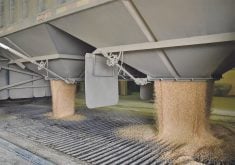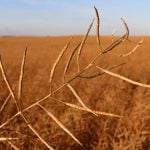Death by poison, bullet, trap, snare, flood, gas and even suction – all
have been tried but the gophers survive.
Shades of Caddyshack, the movie in which an addled greenskeeper tries
to rid a golf course of a rascally rodent. It’s a far-fetched plot, but
with the probable exception of the swimming pool scene, not that
inconceivable to prairie farmers with first-hand knowledge of gopher
damage.
Smooth fields become pockmarked with holes and pimpled with mounds of
Read Also

Crop profitability looks grim in new outlook
With grain prices depressed, returns per acre are looking dismal on all the major crops with some significantly worse than others.
dirt. The holes become hazards for livestock and the mounds become
manglers of farm equipment.
Short hay crops are ravaged by hungry rodents, and cereal crops suffer
similar fate. Worst of all, the peak gopher-producing years seem to
coincide with those when farmers and ranchers can least afford the
losses.
And that’s how the 2002 Ken Turcot Memorial Gopher Derby, set to begin
April 1 in Saskatchewan, came into being. A project of the Saskatchewan
Wildlife Federation, the derby is designed to help control gopher
populations by encouraging people to shoot the rodents and provide the
tails as evidence of the kill.
It isn’t a new concept. Many a farm kid, past and present, has been
offered a bounty for killing gophers – a derby, if you will. The bounty
is usually just enough to make it interesting when considering escape
from chores on a warm spring day.
The method of kill or capture varies with the age and experience of the
hunter. Snares require stealth and patience. Traps require planning.
Poison requires special dispensation from the federal government. And
the trusty .22 plays a big role in keeping gopher numbers down on many
farms.
Killing gophers isn’t some sort of proud prairie tradition or youthful
rite of passage, nor is it a “red-necked” version of blood sport. It is
a necessity that evolved to protect property and productivity.
There’s a body of research on gophers, and much of the prairie material
was gathered by University of Lethbridge biological science professor
Gail Michener. Some of her findings are on the web at
http://home.uleth.ca/~michener/.
What doesn’t seem to yet be known is how to effectively control the
number of gophers so their damage is curtailed yet their value to the
ecosystem is preserved.
Ecologists say there are better ways to address the gopher problem in
the long term, and by all means these should be explored.
In the short term, there are gopher derbies.















